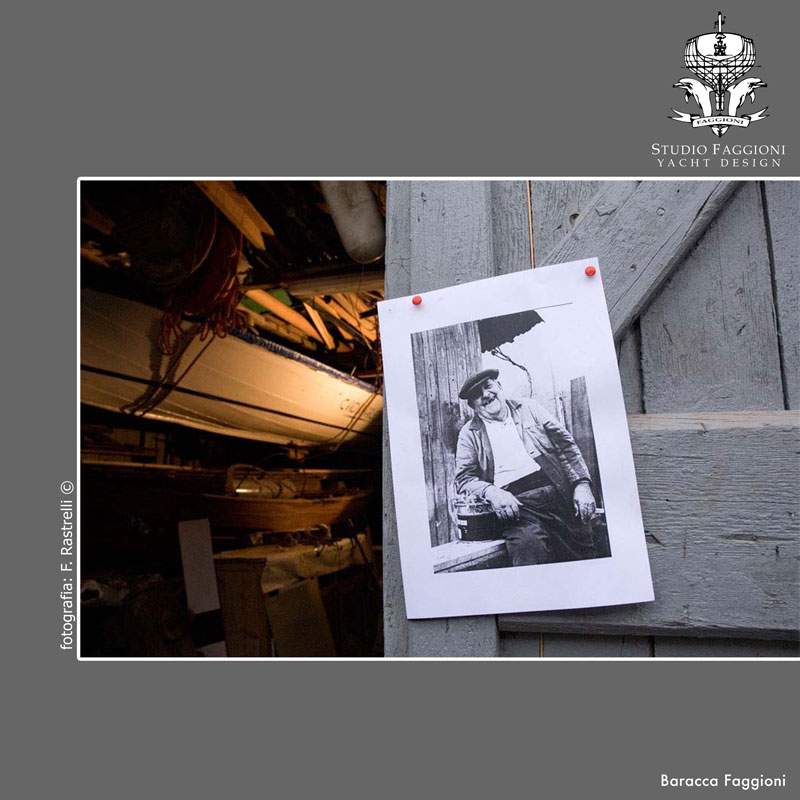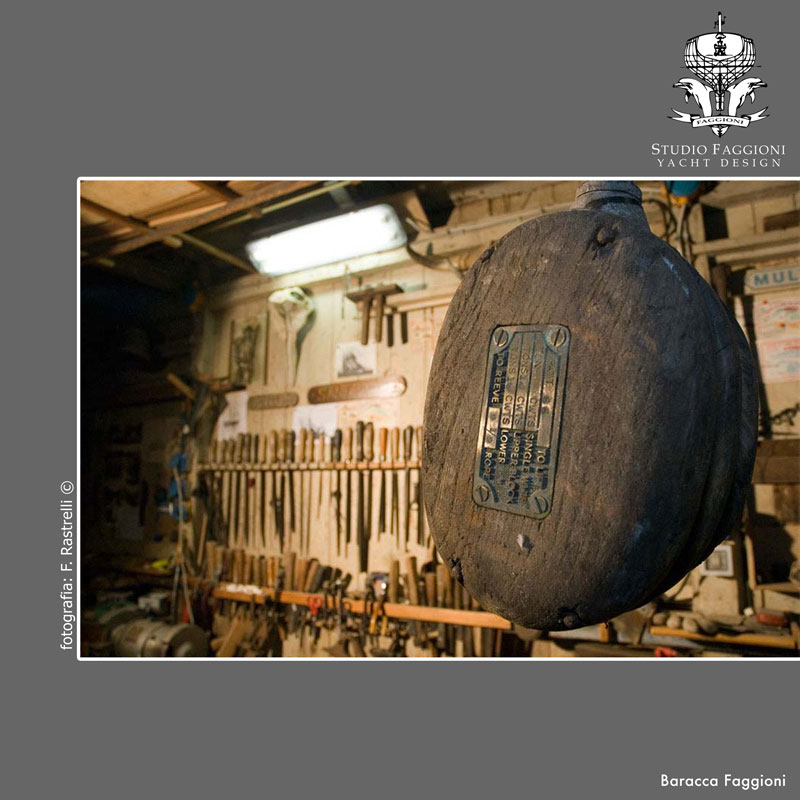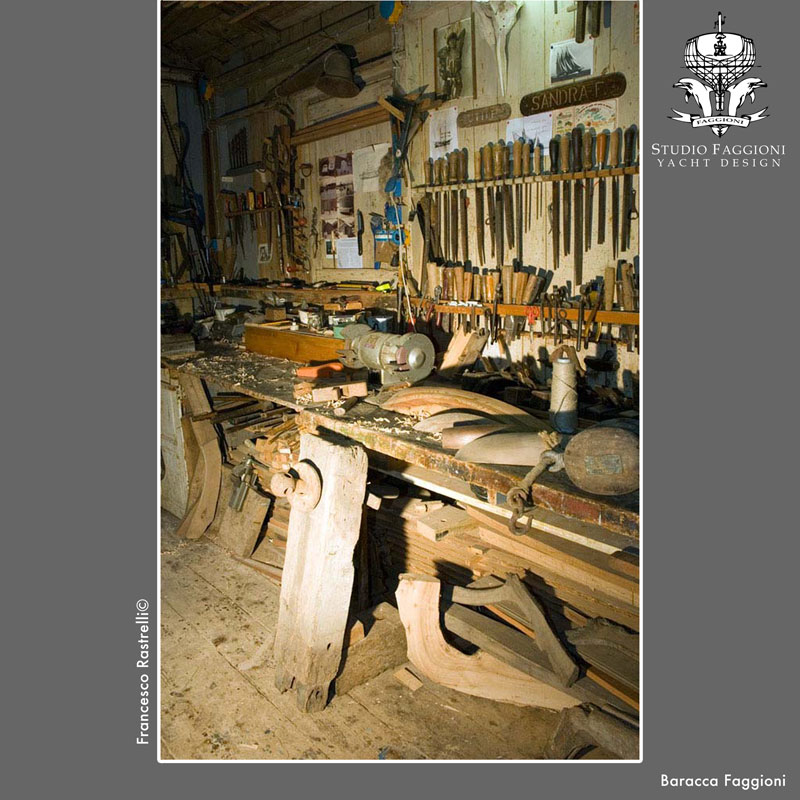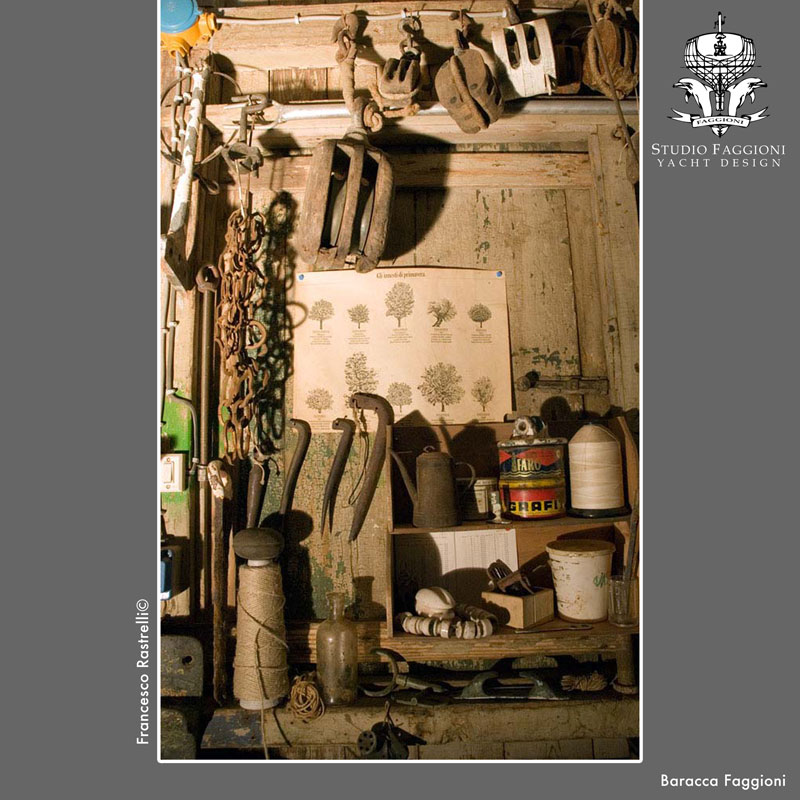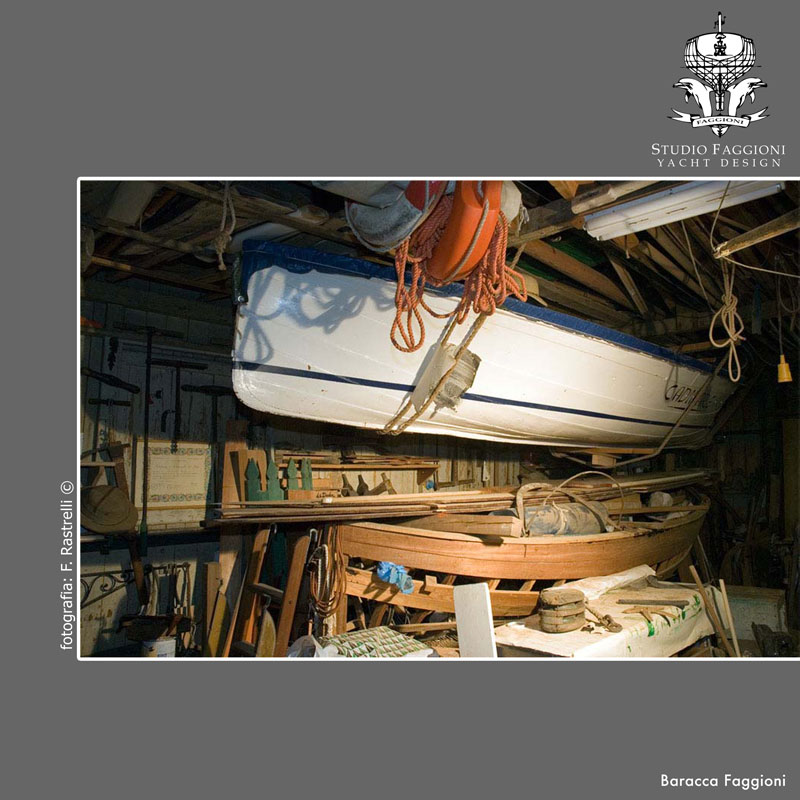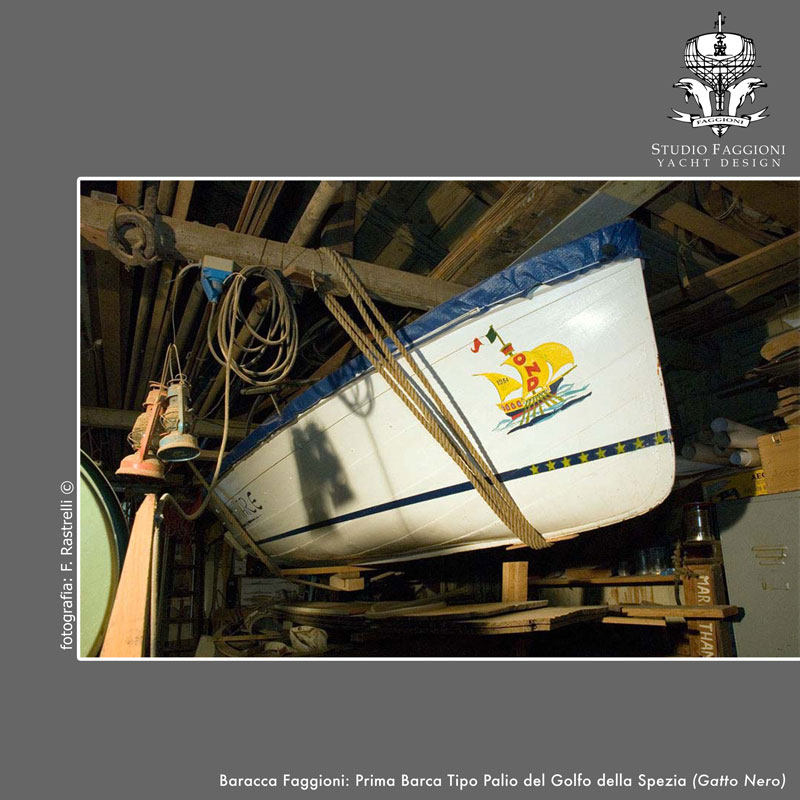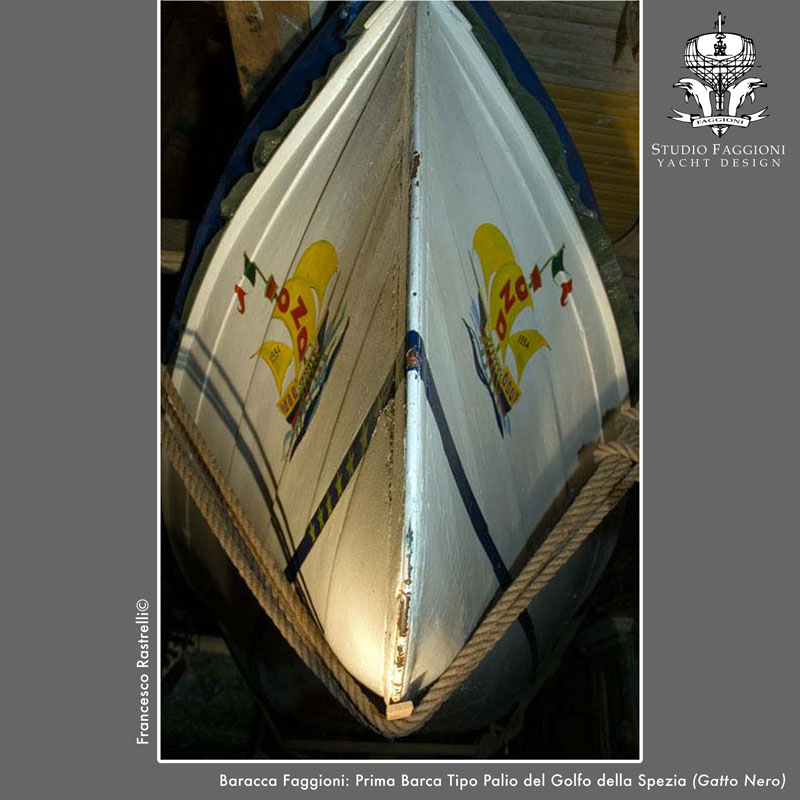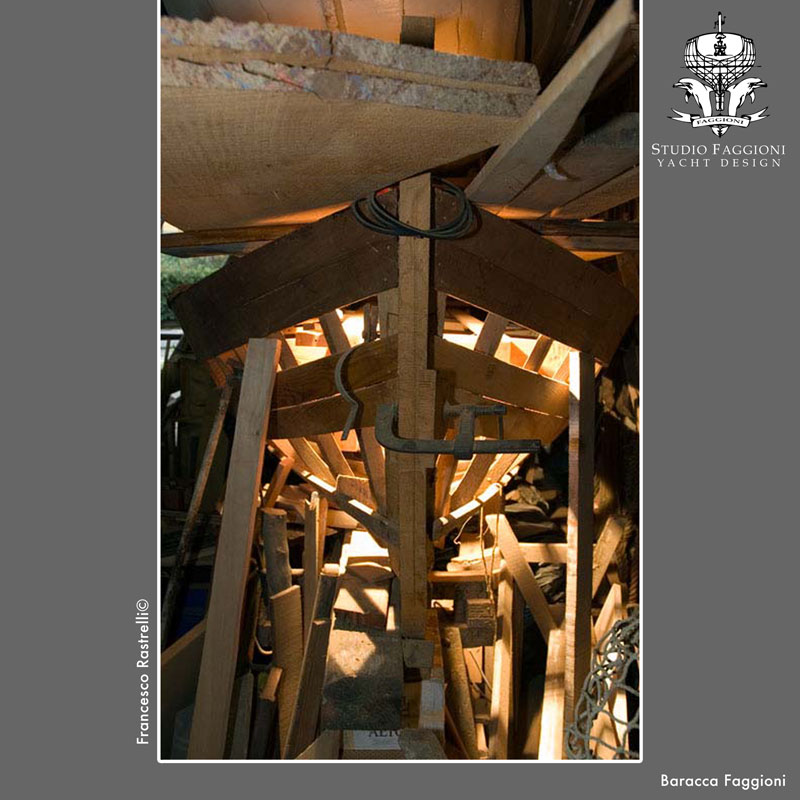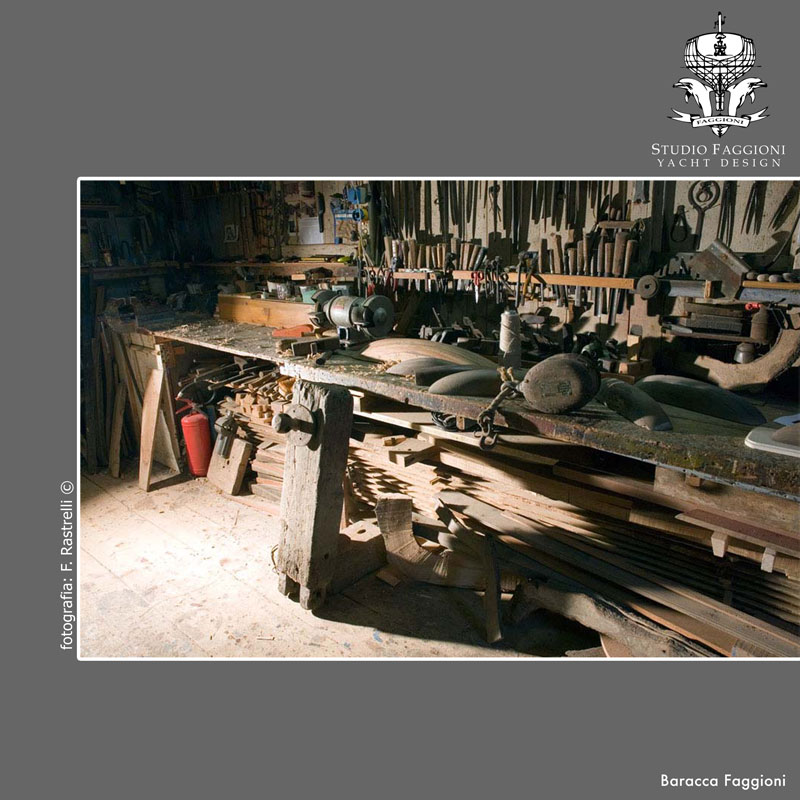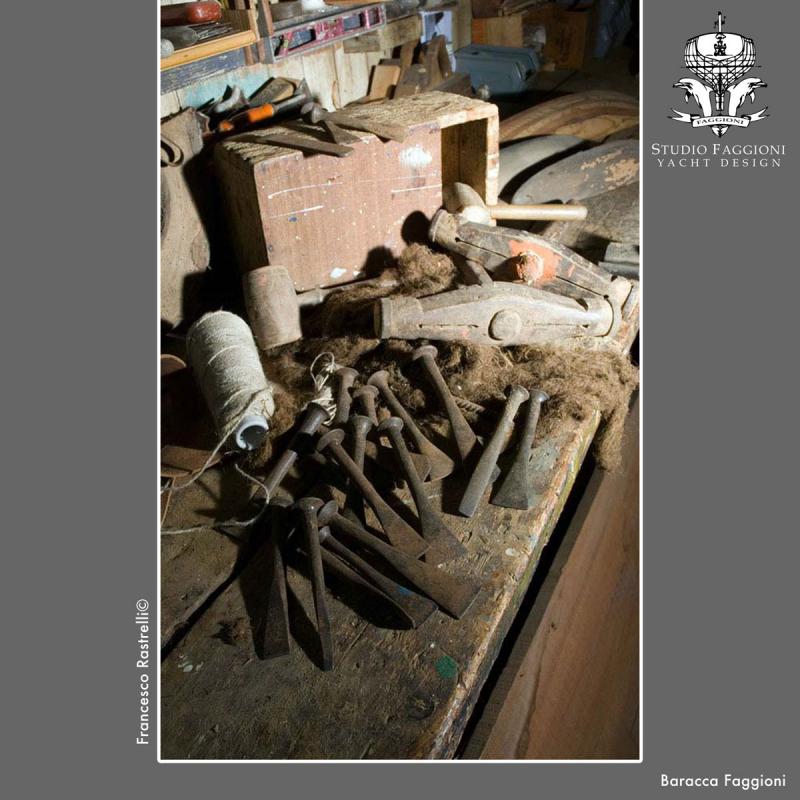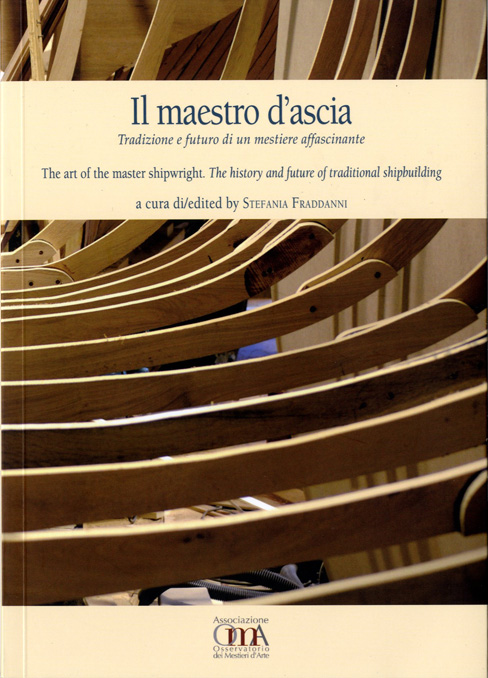Faggioni Marine Crafts Museum
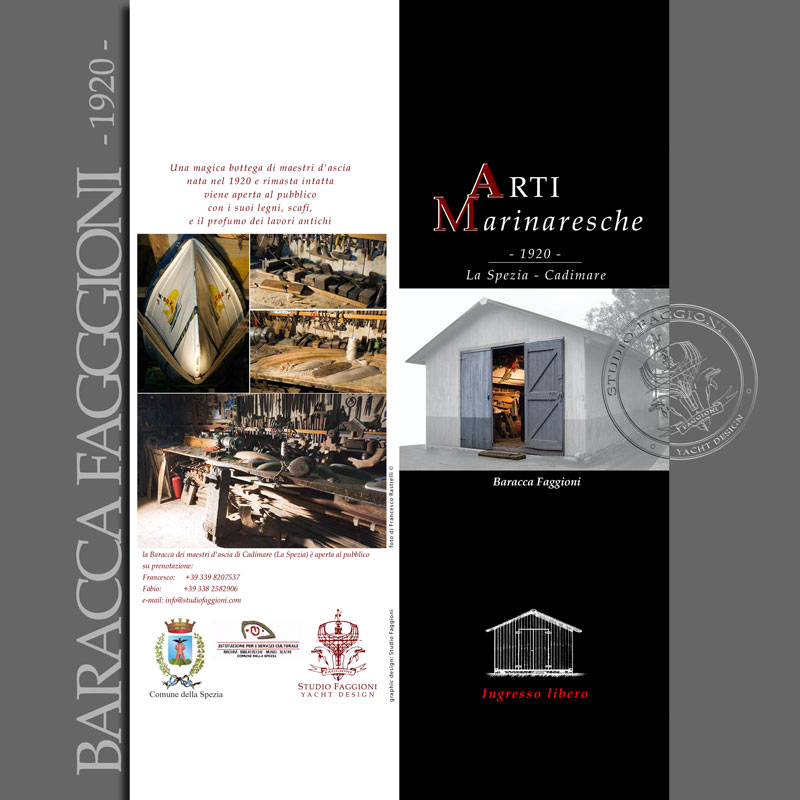
Covering a surface area of just 40 square metres, the Faggioni family boatshed is the last surviving workshop in the Gulf of La Spezia.
Built of interlocked planks of larch wood topped with a corrugated iron roof and paved with pinewood boards. this fragrant workshop is located in Cadimare on the shores of a coast which was once entirely dedicated to the activity of shipbuilding. but whose shipyards and ingenious engineering solutions - such as the system of blocks. tackles and hoists invented in order to say a sailing ship on her side far re-hulling - have long since disappeared. Indeed, all that remains of this age-old local tradition is the name of the square in the centre of the village of Cadimare - Piazza Faggioni which is named after the family of shipbuilders which wrote the history of shipbuilding in the village and the Faggioni family 'boatshed' whose workbench, tidily arranged rows of tools, ageing photographs and piles of wooden planks testify the manual and natural origins of the craft built in the local area.
Built in 1920 by Guido Faggioni a partner of Cantieri Argo in Le Grazie, and his brothers, all of whom were master shipwrights, Stefano Faggioni confirms that his grandfather's boatshed "conceived, designed and built boats with the grace and sensitivity which only a profound knowledge of the art of shipbuilding can achieve". The most famous vessel to leave the boatshed was undoubtedly the sweep-oar rowing boat with which the village participated in the Palio del Golfo a rowing race disputed by crews from each of the 13 villages lining the Gulf of La Spezia) in 1934. Revolutionary in design, the entire boat - a 'violin-shaped' hull with elm ribs and 6 mm Douglas fir planking ? weighed just 54 kilograms and was painted black and named Gatto Nero (black cat) in remembrance of the Faggioni brothers' mother, lsoIina, who had died earlier that year. On the death of Guido Faggioni in 1977, his sons Ugo and Francesco continued their father's business, despite having both undertaken careers in yacht design, a sector to which they brought the added value of having grown up on a diet of "bread and wood shavings".
Ugo went on to become an internationally recognized leader in the yacht design sector and was more than partially responsible for the exciting developments proposed by Italy in this area. The combination of genial ideas and hands-on experience which he brought to the sector have inevitably been inherited by his son, Stefano, who took command of the internationally renowned Studio Faggioni Yacht Design on his father's death, once more 'proving' the peculiar way in which the art of the shipwright is handed down from father to son.
The fact that the transmission of knowledge from generation to generation seems to coming to an end is a reality which Stefano Faggioni and Andrea Vari have attempted to counter with the publication of a docu-film entitled Mastri d'Ascia, Poeti del Golfo, a series of interviews with the protagonists of a disappearing world which they hope will keep the art of shipbuilding alive a little longer the Faggioni boatshed is now both an educational facility which welcomes parties of school children and tourists to the world of traditional shipbuilding and the nerve centre of a new undertaking: the building of a new sweep-oar rowing boat from the remains of a shipwrecked lifeboat.
Based on designs by Francesco Faggioni, the new vessel is being built by Fabio Castiglia with a view to endowing the village of Cadimare with a vessel capable of winning the Palio del Golfo, an endowment which will have a similar effect on the village as the acquisition of a star player would have on the supporters of a local football team. Indeed, it is no chance that the new boat is to be named Quinto Remo (fifth oar). there being four sweep-oarsmen in the local rowing boats traditionally used in the competition, and the undertaking has already involved both the older and the younger members of the local community, the former in transmitting their knowledge to the new generations and the latter in embracing a heritage which would otherwise be lost for ever.
Corrado Ricci

